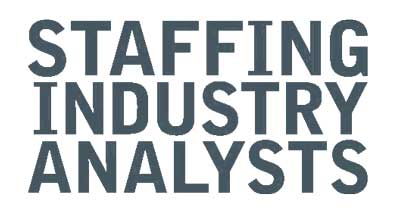Is Contingent Labor The Future of Work?
In the age of AI and in the face of seemingly never-ending economic uncertainty, the very essence of work is undergoing a profound transformation. With each technological leap forward, the boundaries of traditional work structures are continually redrawn. The rise of cutting-edge technologies has revolutionized how we communicate, collaborate, and conduct business, giving birth to a diverse array of possibilities, disrupting long-standing models of employment and empowering a workforce that thrives on flexibility and adaptability. As we step into this dynamic landscape, it’s crucial to recognize the pivotal role of contingent labor in shaping the future of work.
Embracing the Contingent Workforce
In a world marked by rapid technological advancement, shifting business landscapes and an economy that has the mood swings of a teenager, the American workforce is undergoing a profound transformation. At the heart of this transformation lies the contingent workforce—a dynamic pool of talent that is redefining how organizations approach hiring, management, and the very nature of work itself.
Contingent workers encompass a diverse spectrum of professionals, ranging from freelancers and contractors to temporary employees. Unlike permanent employees, contingent workers engage with organizations on a project-by-project basis or for specific periods of time. This fluidity allows businesses to tap into a specialized skill set and adapt swiftly to changing demands without the constraints of long-term employment commitments.
Unveiling Specialized Skills and Scalability
The power of the contingent workforce lies in its ability to bring specialized skills to the table. Employers sometimes think of contingent workforce as high-volume, low skill workers, but the fact is that there are skilled contingent workers at all levels. From the manufacturing floor to upper management and beyond, there are professionals who enjoy working short-and long-term assignments with dynamic employers.
Along with diverse skill sets, a contingent workforce offers unparalleled scalability. Amid fluctuating demands and market volatilities, businesses often find themselves facing sudden spikes in workload or project requirements. Contingent workers provide an on-demand resource that can be seamlessly integrated into the workforce, enabling organizations to scale up or down as needed without the burdens of traditional recruitment processes.
Addressing Flexibility, Agility, and Cost-Effectiveness Demands of Contingent Labor
The renewed popularity of the contingent workforce is not merely a response to shifting workplace dynamics—it’s a strategic solution that aligns with the demands of modern business realities. At the forefront of these demands is the need for flexibility. Organizations no longer operate within rigid structures; instead, they must have the ability to pivot swiftly in response to market shifts, technological breakthroughs, changing customer expectations and economic shifts outside the control of the organization. Contingent workers offer the inherent flexibility that empowers organizations to navigate these changes without being encumbered by traditional employment models.
In a time where cost-effectiveness is paramount, the contingent workforce emerges as a strategic ally. The ability to engage specialized talent for specific projects mitigates the financial commitments associated with permanent employment. Overhead costs, benefits, and other long-term commitments are minimized, freeing up resources to be strategically deployed elsewhere.
Benefits of Embracing Contingent Labor
Organizations today are navigating uncharted territory to find agile and innovative solutions. Among the most transformative of these solutions is the adoption of a contingent workforce model—an approach that offers a wealth of advantages, revolutionizing how businesses approach talent acquisition and resource allocation.
- Flexibility: Flexibility is the cornerstone of the contingent workforce model. In a world defined by rapid changes and unforeseen disruptions, organizations need the agility to recalibrate their workforce swiftly. Contingent workers provide precisely this flexibility—enabling businesses to scale up or down based on market demands without the entanglements of long-term employment contracts. This adaptability ensures that resources are optimally allocated, leading to enhanced efficiency and competitiveness.
- Access to Specialized Talent: The contingent workforce offers access to a dynamic pool of specialized talent, each with a distinct skill set and expertise. Organizations often struggle with complex challenges that require niche skills—skills that might not be present within their core team. Contingent workers bridge this gap, infusing projects with innovation and fresh perspectives.
- Cost Reduction: Cost-effectiveness is a driving force behind the embrace of the contingent workforce. Hiring permanent employees involves substantial financial commitments, ranging from benefits to overhead costs. In contrast, the contingent workforce allows organizations to engage specialized talent on a project-specific basis, mitigating long-term financial commitments.
- Improved Time-to-Hire: Traditional recruitment cycles can be time-consuming and resource-intensive, affecting an organization’s ability to seize opportunities swiftly. Contingent workers, often sourced through staffing agencies, recruiting companies or workforce management solutions providers, streamline the process. These professionals are readily available, already vetted, and equipped to dive into projects immediately. This rapid onboarding translates to quicker time-to-market, enabling organizations to capitalize on emerging trends and secure a competitive edge.
It is also important to note that navigating risk and compliance challenges is a critical aspect of workforce management. Staffing agencies play a pivotal role in reducing these challenges. By partnering with workforce solutions providers, organizations gain expert guidance in managing contingent workforces compliantly. This partnership ensures adherence to labor laws, mitigates misclassification risks, and streamlines regulatory compliance—allowing businesses to focus on their core objectives with confidence.
The Future Outlook for Contingent Labor
The resurgence of the contingent workforce is not merely a passing trend—it’s a paradigm shift that will continue to gain momentum. With technology as its guiding light, the path forward for contingent labor holds promises that are both transformative and exhilarating. Central to this journey is the potential of predictive analytics and artificial intelligence (AI)—technological advancements that have the power to revolutionize the way we match talent to opportunities and plan workforce strategies.
Predictive analytics and AI are set to redefine talent acquisition and workforce planning. These technologies leverage vast datasets, historical trends, and real-time insights to make informed predictions and recommendations. For organizations, this translates to a strategic advantage as they navigate the complexities of finding the right talent at the right time. Predictive analytics can unveil insights that enable businesses to proactively source and engage contingent workers with the precise skills demanded by their evolving projects. This dynamic approach not only accelerates project execution but also fuels innovation by ensuring that specialized expertise is seamlessly integrated into the workforce.
Impact on Talent Matching and Labor Planning
The integration of predictive analytics and AI holds immense potential in the realm of talent matching. Matching the right skills with the right tasks is often a challenge. Predictive analytics, fueled by AI, can analyze historical data to identify patterns and trends, enabling businesses to make data-driven decisions about which contingent workers are most likely to succeed in specific roles.
Furthermore, labor planning—the art of aligning workforce strategies with business objectives—stands to gain from these advancements. The ability to forecast demand, understand skill gaps, and anticipate market dynamics can empower organizations to create agile and responsive workforce plans. Contingent workers, armed with specialized skills, can be strategically integrated to address immediate requirements and foster sustainable growth.
Quicker Time-to-Market and Elevating Outcomes
In a hyper-competitive business landscape, time-to-market is a decisive factor in determining success. Organizations that can swiftly bring their products, services, and innovations to market gain a critical edge. The contingent workforce plays a pivotal role in expediting this journey. Unlike traditional hiring processes, which can be time-consuming and resource-intensive, engaging contingent workers is rapid and efficient.
But the contingent workforce isn’t just about speed—it’s about enhancing project outcomes. The specialized skills and expertise that contingent workers bring to the table are a catalyst for achieving superior results. Organizations can leverage these experts to overcome challenges, innovate, and solve intricate problems.
Furthermore, the fluidity of the contingent workforce allows organizations to adapt swiftly to changes in project scope or direction. If market conditions evolve or project priorities shift, contingent workers can be reconfigured or reassigned as needed. This agility ensures that projects remain aligned with strategic objectives and can pivot in response to evolving demands.
Shaping Tomorrow’s Workforce Today
The future of work, driven by the contingent labor model, promises an era of unparalleled agility, innovation, and adaptability. As technology evolves, predictive insights deepen, and diversity becomes a strategic imperative, the contingent workforce stands as an indispensable asset that organizations must harness to thrive in an ever-changing landscape. As you chart your organization’s course forward, remember that the future is contingent—contingent on the transformative power of a workforce that is as dynamic and diverse as the challenges it aims to conquer.
At SelecSource, we recognize the transformative potential of the contingent workforce. We are committed to streamlining the hiring process, providing efficient workforce solutions, and offering payrolling and on-site management programs that empower organizations to harness the benefits of contingent labor. With our scientifically based matching methodology, we ensure that each candidate is aligned with your organizational goals, laying the foundation for enhanced productivity, motivation, and retention. Contact us today to embrace the workforce of tomorrow.








